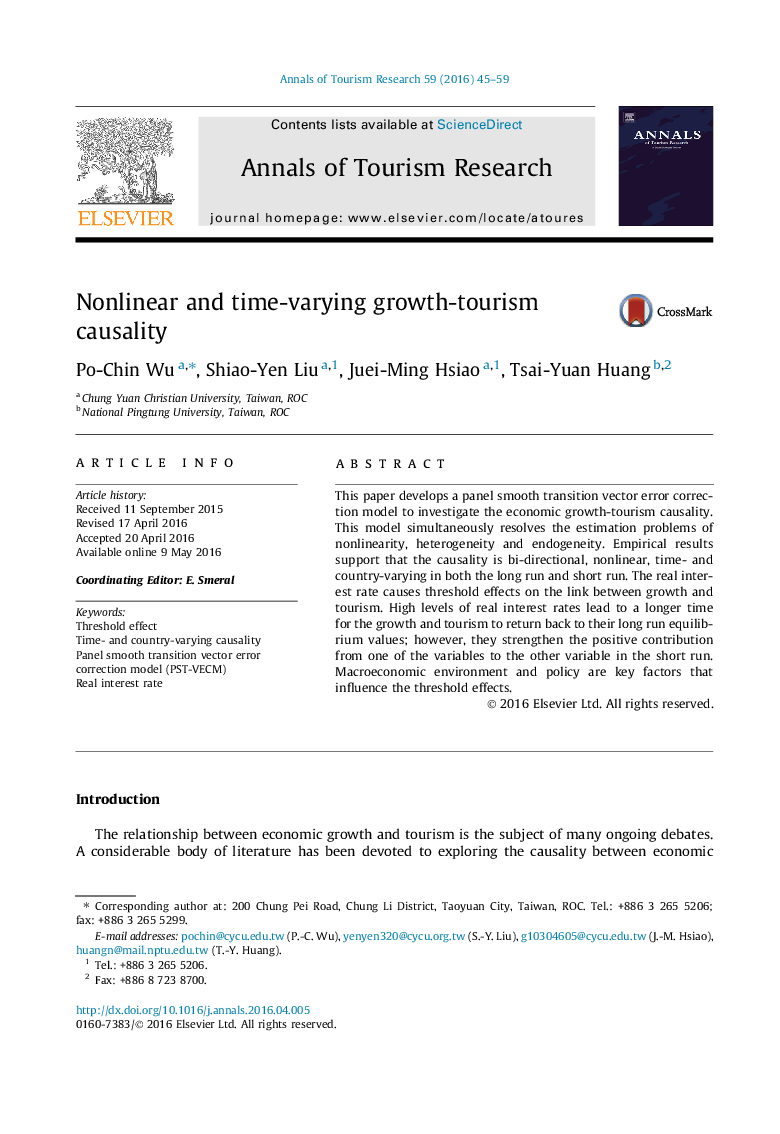| Article ID | Journal | Published Year | Pages | File Type |
|---|---|---|---|---|
| 1006960 | Annals of Tourism Research | 2016 | 15 Pages |
•An econometric model in a nonlinear and panel context is used to assess the growth-tourism causality.•The characteristics of nonlinearity, heterogeneity, and time variation in the causality are considered.•The role of the real interest rate, a typical proxy of monetary policy, in the causality is investigated.
This paper develops a panel smooth transition vector error correction model to investigate the economic growth-tourism causality. This model simultaneously resolves the estimation problems of nonlinearity, heterogeneity and endogeneity. Empirical results support that the causality is bi-directional, nonlinear, time- and country-varying in both the long run and short run. The real interest rate causes threshold effects on the link between growth and tourism. High levels of real interest rates lead to a longer time for the growth and tourism to return back to their long run equilibrium values; however, they strengthen the positive contribution from one of the variables to the other variable in the short run. Macroeconomic environment and policy are key factors that influence the threshold effects.
